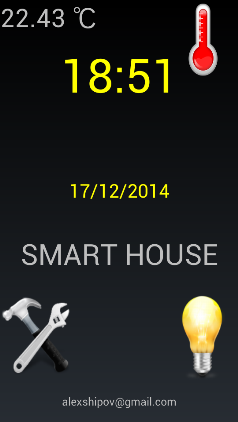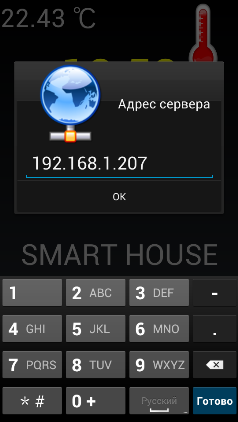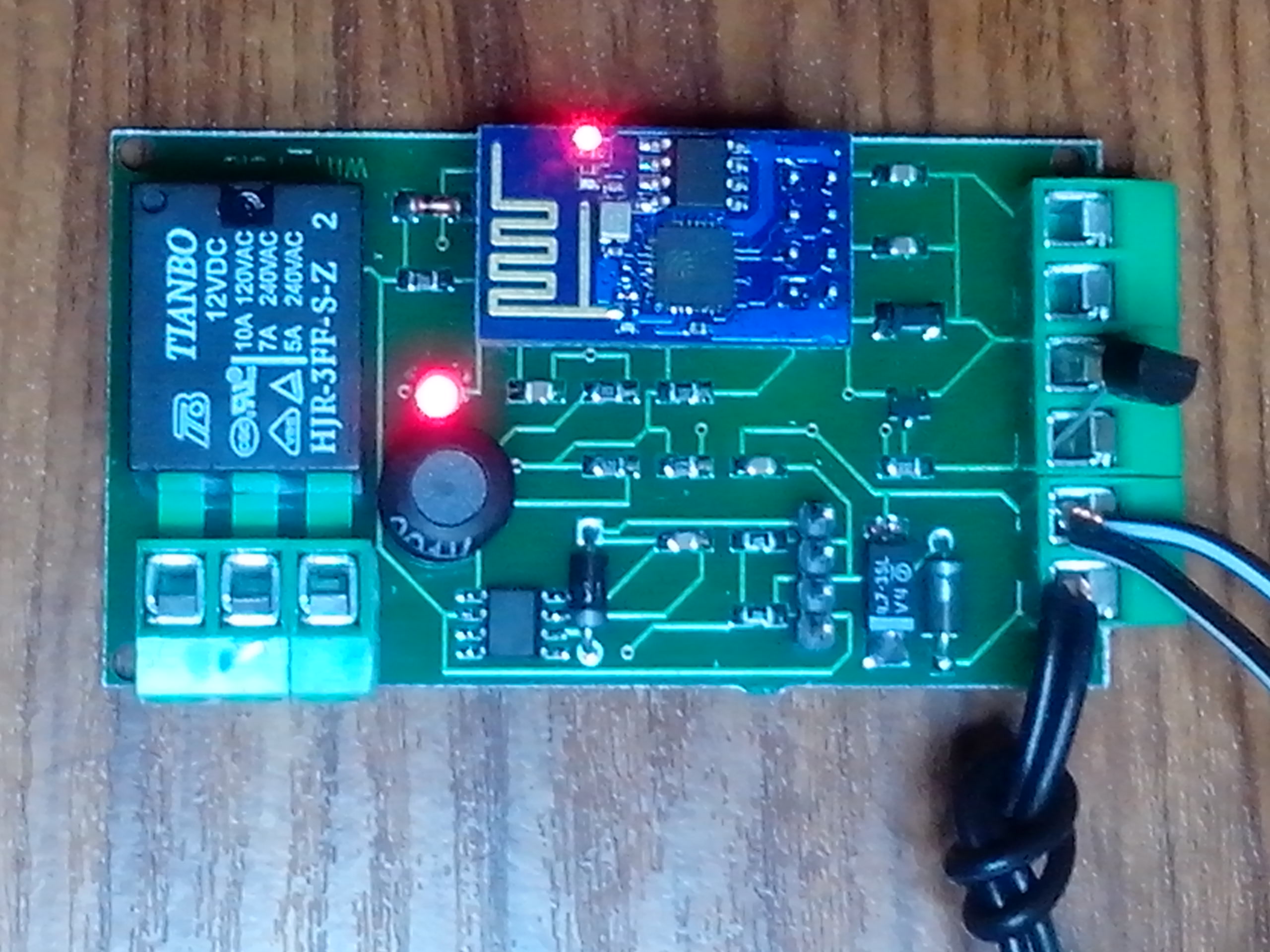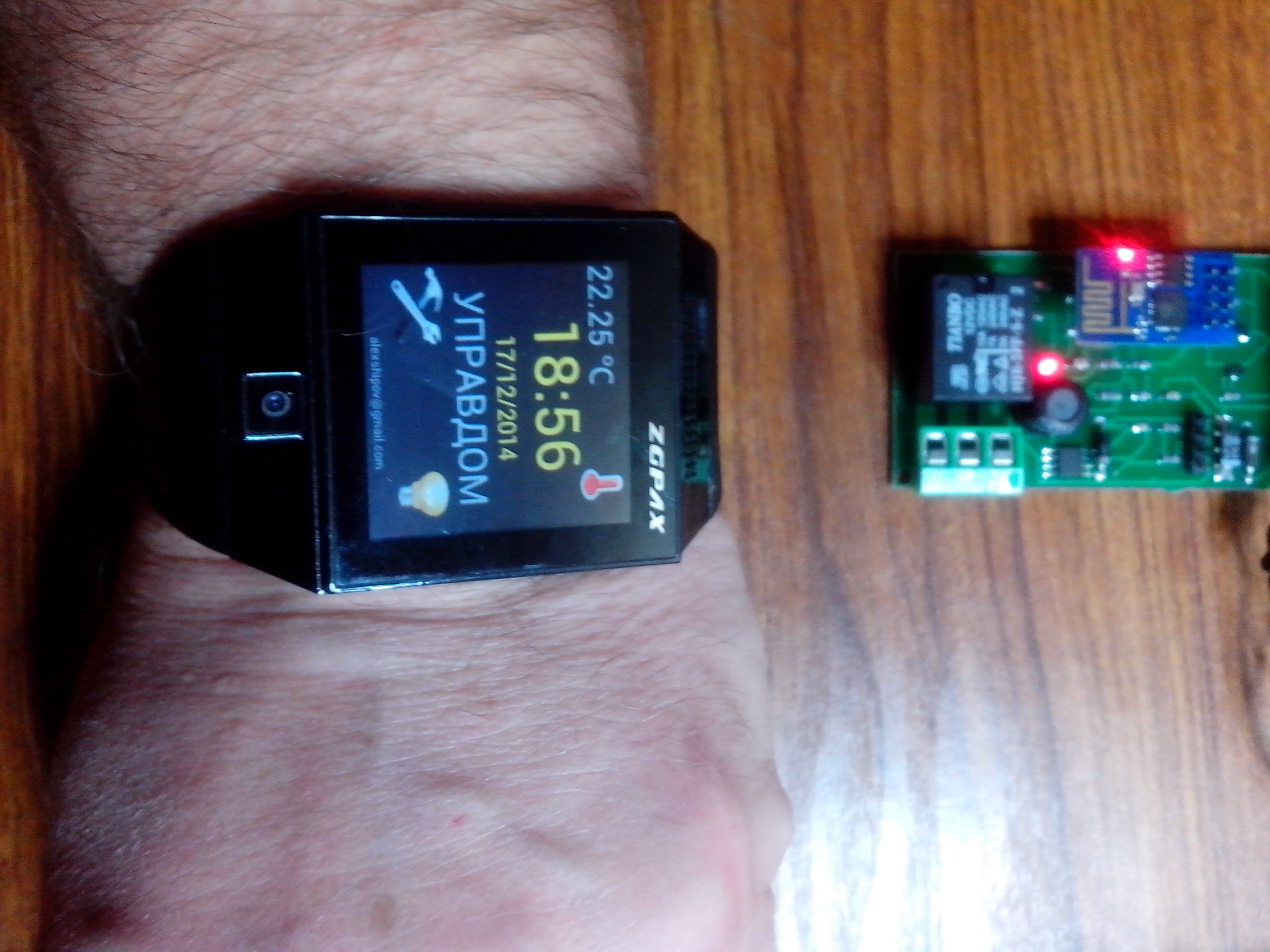I write little app for Android watch (or smartphone) and esp8266.It's not a bad thing for the smart home.Сost module ~3,5$!!!
module ESP8266

Corresponding Interface:
SDIO 2.0, SPI, UART
32-pin QFN package
Integrated RF switch, balun, 24dBm PA, DCXO, and PMU
Integrated RISC processor, on-chip memory and external memory interfaces
Integrated MAC/baseband processors
Quality of Service management
I2S interface for high fidelity audio applications
On-chip low-dropout linear regulators for all internal supplies
Proprietary spurious-free clock generation architecture
Integrated WEP, TKIP, AES, and WAPI engines
Specification:
802.11 b/g/n
Wi-Fi Direct (P2P), soft-AP
Integrated TCP/IP protocol stack
Integrated TR switch, balun, LNA, power amplifier and matching network
Integrated PLLs, regulators, DCXO and power management units
+19.5dBm output power in 802.11b mode
Power down leakage current of <10uA
Integrated low power 32-bit CPU could be used as application processor
SDIO 1.1/2.0, SPI, UART
STBC, 1×1 MIMO, 2×1 MIMO
A-MPDU & A-MSDU aggregation & 0.4ms guard interval
Wake up and transmit packets in < 2ms
Standby power consumption of < 1.0mW (DTIM3)
That it is able my app to :
- read the temperature DS18B20
- turn ON/OFF relay (button or voice)
- considered on time relay (save flash memory)
how it looks like:

setting:

I made a simple development board

PHOTO

I write LUA SCRIPT UDP SERVER for module
module ESP8266

Corresponding Interface:
SDIO 2.0, SPI, UART
32-pin QFN package
Integrated RF switch, balun, 24dBm PA, DCXO, and PMU
Integrated RISC processor, on-chip memory and external memory interfaces
Integrated MAC/baseband processors
Quality of Service management
I2S interface for high fidelity audio applications
On-chip low-dropout linear regulators for all internal supplies
Proprietary spurious-free clock generation architecture
Integrated WEP, TKIP, AES, and WAPI engines
Specification:
802.11 b/g/n
Wi-Fi Direct (P2P), soft-AP
Integrated TCP/IP protocol stack
Integrated TR switch, balun, LNA, power amplifier and matching network
Integrated PLLs, regulators, DCXO and power management units
+19.5dBm output power in 802.11b mode
Power down leakage current of <10uA
Integrated low power 32-bit CPU could be used as application processor
SDIO 1.1/2.0, SPI, UART
STBC, 1×1 MIMO, 2×1 MIMO
A-MPDU & A-MSDU aggregation & 0.4ms guard interval
Wake up and transmit packets in < 2ms
Standby power consumption of < 1.0mW (DTIM3)
That it is able my app to :
- read the temperature DS18B20
- turn ON/OFF relay (button or voice)
- considered on time relay (save flash memory)
how it looks like:

setting:

I made a simple development board

PHOTO

I write LUA SCRIPT UDP SERVER for module
B4X:
counter=0
GCOUNTER=0
port=7777
stled=0
pinled=9
pin = 8
ow.setup(pin)
TEMP=0
counter=0
lasttemp=-999
function Init()
print("LT205WF V1.0")
pinled=9
gpio.mode(pinled, gpio.OUTPUT)
gpio.write(pinled, gpio.LOW)
if file.open("ltimer.log", "r")== nil then
file.remove("ltimer.log")
file.open("ltimer.log", "w")
file.writeline(GCOUNTER)
file.close()
else
GCOUNTER=file.readline()
file.close()
end
end
function bxor(a,b)
local r = 0
for i = 0, 31 do
if ( a % 2 + b % 2 == 1 ) then
r = r + 2^i
end
a = a / 2
b = b / 2
end
return r
end
function ShowTemp()
getTemp()
t1 = lasttemp / 10000
t2 = (lasttemp >= 0 and lasttemp % 10000) or (10000 - lasttemp % 10000)
t2 =t2 / 100
--print("!TEMP" .. t1 .. "." .. string.format("%2d", t2) .."\r")
TEMP= t1 .. "." .. string.format("%d", t2)
--print(TEMP)
end
function getTemp()
addr = ow.reset_search(pin)
repeat
tmr.wdclr()
if (addr ~= nil) then
crc = ow.crc8(string.sub(addr,1,7))
if (crc == addr:byte(8)) then
if ((addr:byte(1) == 0x10) or (addr:byte(1) == 0x28)) then
ow.reset(pin)
ow.select(pin, addr)
ow.write(pin, 0x44, 1)
tmr.delay(1000000)
present = ow.reset(pin)
ow.select(pin, addr)
ow.write(pin,0xBE, 1)
data = nil
data = string.char(ow.read(pin))
for i = 1, 8 do
data = data .. string.char(ow.read(pin))
end
crc = ow.crc8(string.sub(data,1,8))
if (crc == data:byte(9)) then
t = (data:byte(1) + data:byte(2) * 256)
if (t > 32768) then
t = (bxor(t, 0xffff)) + 1
t = (-1) * t
end
t = t * 625
lasttemp = t
--print("Last temp: " .. lasttemp)
end
tmr.wdclr()
end
end
end
addr = ow.search(pin)
until(addr == nil)
end
----------------MAIN FUNCTION-----------------------
Init()
srv=net.createServer(net.UDP)
srv:on("receive", function(srv, pl)
print(pl)
if pl=="!SetR1_1\r" then
gpio.write(pinled, gpio.HIGH)
stled=1
counter=0
srv:send("!LEDON\r")
end
if pl=="!SetR0_1\r" then
gpio.write(pinled, gpio.LOW)
stled=0
srv:send("!LEDOFF\r")
file.open("ltimer.log", "w")
file.write(GCOUNTER)
file.close()
end
if pl=="!GetR_1\r" then
if stled ==1 then
srv:send("!LEDON\r")
else
srv:send("!LEDOFF\r")
end
end
if pl=="!GetCount\r" then
srv:send("!COUNT "..counter.."\r")
end
if pl=="!GetGcount\r" then
srv:send("!GCOUNT "..GCOUNTER.."\r")
end
if pl=="!GetC_1\r" then
print(ShowTemp())
srv:send("!TEMP"..TEMP.."\r")
end
if pl=="!ClrCount\r" then
GCOUNTER=0
srv:send("!GCOUNT=0\r")
end
if pl=="!GetIp\r" then
srv:send("!IP "..wifi.sta.getip().."\r")
end
end)
srv:listen(port)
uart.on("data",function(data)srv:send(data)end, 1)
--timer 1
tmr.alarm(2,60000,1, function()
if stled==1 then
counter=counter+1
GCOUNTER=GCOUNTER+1
--print(counter)
end
end )Attachments
Last edited:


